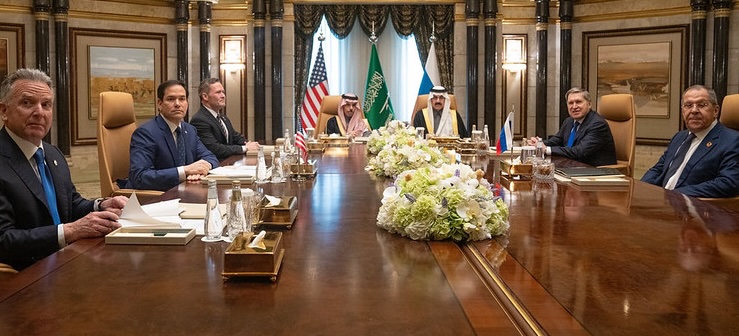Already a subscriber? Make sure to log into your account before viewing this content. You can access your account by hitting the “login” button on the top right corner. Still unable to see the content after signing in? Make sure your card on file is up-to-date.
Following the first face-to-face meeting between top officials, both the US and Russia have confirmed plans to restore diplomatic ties, explore economic cooperation, and establish a framework for ending the war in Ukraine.
Some shit you should know before you read: Following Russia’s invasion of Ukraine, the United States moved to isolate Moscow through a series of harsh economic and diplomatic sanctions. Then-President Joe Biden, arguing that there was nothing to discuss with Vladimir Putin while Russian forces occupied Ukrainian territory, refused to engage in direct talks with the Kremlin throughout the war. Instead, the US imposed sweeping financial restrictions, including freezing hundreds of billions of dollars in Russian central bank assets and cutting major Russian banks from the SWIFT international payment system. Sanctions have targeted key industries such as energy, defense, and technology, with bans on the export of advanced semiconductors, aerospace components, and oil extraction equipment, severely limiting Russia’s access to critical Western technology. Additionally, the US imposed travel bans and asset freezes on Russian oligarchs, government officials, and businesses linked to the war effort while also capping Russian oil prices to weaken its revenue streams.

What’s going on now: In a major reversal from previous diplomatic norms under the Biden administration, high-level US and Russian officials met in Riyadh, Saudi Arabia, to discuss restoring diplomatic ties and exploring a path to ending the war in Ukraine. US Secretary of State Marco Rubio and Russian Foreign Minister Sergey Lavrov led the talks, marking the most extensive engagement between the two nations since Russia’s full-scale invasion of Ukraine in 2022. The discussions focused on three key points: re-establishing the functionality of their respective embassies, creating a high-level team to support Ukraine peace talks, and exploring broader economic and geopolitical cooperation. Notably, no Ukrainian or European representatives were present at the meeting.
Secretary Rubio described the talks as the start of a longer process. He said, “Ending the war in Ukraine could unlock the door for incredible opportunities that exist to partner with the Russians geopolitically on issues of common interest and frankly, economically on issues that hopefully will be good for the world and also improve our relations in the long term.” Meanwhile, Lavrov characterized the meeting as productive and suggested that the US was beginning to recognize Russia’s stance. “I have reason to believe that the American side has started to better understand our position,” he said, adding that Russia considered any NATO-linked military presence in Ukraine unacceptable.

He also indicated that Russia and the US had agreed to resume discussions on diplomatic staffing and lifting sanctions. The meeting, initiated following a Trump-Putin phone call, has paved the way for a potential future summit between the two leaders, though no date has been set.
This all comes as European leaders and Ukrainian officials have expressed growing concern over the US holding direct talks with Russia without their involvement. Ukraine has strongly objected to any negotiations about its future that do not include its leadership, with President Volodymyr Zelenskyy warning that “any agreements about us without us” would not be recognized. European Union leaders echoed these concerns and called for an emergency summit to discuss the implications of the US-Russia talks and coordinate their response. French President Emmanuel Macron, who hosted the meeting, said, “Russia must end its aggression, and strong and credible security guarantees for the Ukrainians must accompany this.”






